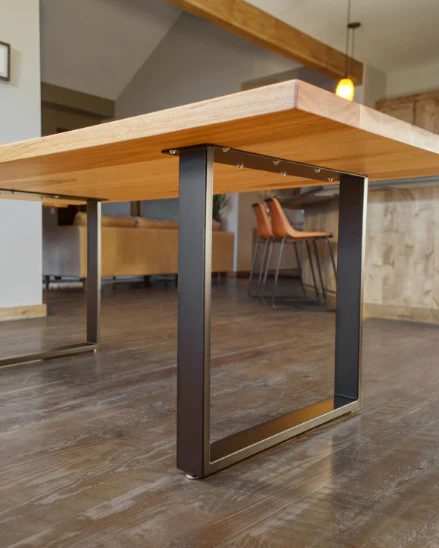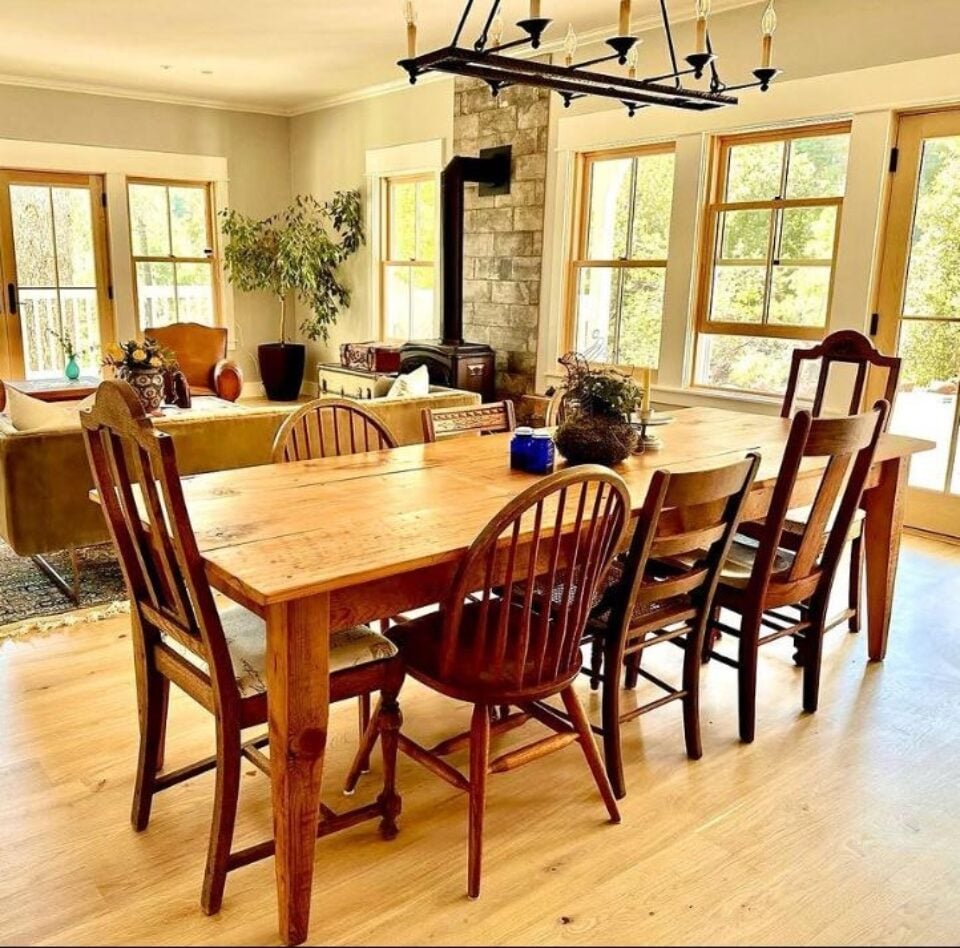Selecting the Perfect Table: What Styles Work Best for Your Home?
Picking the perfect dining table for your home can be a nuanced procedure that stabilizes aesthetic appeals and capability. To navigate these choices successfully and locate a table that truly matches your home, think about the adhering to aspects in detail.
Examining Your Space
Assessing the measurements and layout of your eating location is an important initial step in picking the perfect table. Begin by measuring the length and size of the space, making up entrances, home windows, and various other building attributes that can affect table positioning. This makes certain that your table not just fits yet additionally enables comfy activity around it.
Take into consideration the variety of individuals you typically entertain. A table should accommodate your household's day-to-day demands while supplying enough adaptability for periodic guests. Generally of thumb, assign at least 24 inches of table width each to make certain a comfy dining experience.
It's also important to maintain appropriate clearance around the table. Preferably, there must be at least 36 inches in between the table side and walls or other furnishings, allowing simple access and activity. For areas where chairs with arms or extra storage space devices like buffets are included, increasing this clearance to 48 inches is suggested.
Lighting and ambience play considerable roles. Make sure that your dining table aligns with existing illumination fixtures or prepare for sufficient lighting options. This extensive spatial analysis assurances that your table not just fits physically however also balances with your room's total functionality and visual.
Popular Table Styles

Standard dining tables typically feature ornate details, bent legs, and abundant timber surfaces, evoking a feeling of classic sophistication. They are best for homes with traditional decor or those aiming to add a touch of class to their dining area.
Modern dining tables prioritize simpleness and tidy lines, often incorporating products like glass and metal. These tables are optimal for contemporary rooms, offering a streamlined and clean look that complements minimal style philosophies.
Rustic table, on the various other hand, emphasize all-natural materials and a handcrafted look - dining room table legs. They typically feature redeemed wood and a troubled surface, creating a cozy and inviting ambience. These tables work well in farmhouse-style homes or those looking for a relaxing, organic feeling
Industrial dining tables incorporate raw materials such as steel and wood, often showcasing a practical aesthetic. This design is well-suited for loft spaces or urban areas, including a touch of tough beauty and toughness to the dining experience.
Each design offers unique advantages, making it necessary to choose one that lines up with your home's total style and your individual preferences.
Material Selections
When selecting a table, the choice of material plays a critical role in establishing both the table's aesthetic appeals and capability. Wood, metal, glass, and composite products each deal distinct advantages and obstacles, making it crucial to straighten the material with your home's design and way of living demands.
Wood is an ageless and functional alternative, available in ranges such as oak, walnut, and mahogany. Understood for its longevity and warmth, wood matches both standard and modern insides. However, it requires routine maintenance to protect against scrapes and bending.
Steel tables, commonly crafted from stainless-steel, light weight aluminum, or functioned iron, are commended for their modern appeal and robustness. They are particularly suited for industrial or minimalist settings but can be prone to dents and may feel cold to the touch.
Glass eating tables bring an air of elegance and visibility, perfect for smaller sized rooms as they develop an impression of even more space. While simple to clean, glass can be vulnerable to smudges and requires mindful taking care of to avoid chips and splits.
Composite products, such as MDF and plywood, offer economical and adjustable solutions, though they might lack the longevity of all-natural products. Selecting the best material guarantees your table is both a useful property and a visual pleasure.
Sizes And Shape Factors To Consider
After establishing the ideal material for your dining table, the following factor to consider is selecting the ideal form and dimension to fit your room. The form of the table considerably affects the area's visual and functionality. Rectangular tables, one of the most common form, are ideal for larger spaces and can accommodate a higher number of guests. They additionally permit for a much more formal eating experience. Alternatively, rounded tables promote a sense of affection and are outstanding for smaller dining locations, urging conversation by eliminating edges and making every person feel similarly included.
As a guideline of thumb, assign at least 24 inches of table width per person to guarantee comfortable dining. Additionally, consider the table's clearance space: there should be at least 36 inches between the table side and the wall surfaces or various other furnishings. Prolonging tables provide more versatility if you frequently host bigger celebrations, giving added seats when needed without occupying extra room daily.
Matching Your Style
Choosing a dining table that integrates with your existing design is pivotal in developing a natural and inviting room. Begin by evaluating your current indoor design style, whether it be modern, typical, rustic, or eclectic. The dining table ought to complement the general aesthetic, not compete with it. A sleek, minimal table with clean lines is ideal for a contemporary home, while a vintage, ornate table fits an extra conventional setup.
If your decor features warm tones and Learn More Here natural materials, think about a wood table to boost the natural feeling. Alternatively, a glass or steel table may be more suitable in an area dominated by amazing shades and commercial aspects.
Appearance plays an essential function as well. A rough-hewn, recovered directory wood table can add character to a rustic room, while a polished marble surface can elevate an elegant dining area. Consider the scale and percentage of the table in relationship to the space size and existing furniture. A well-matched dining table not just boosts visual appeal but additionally improves the general dining experience.

Final Thought
Picking the ideal dining table necessitates careful consideration of room, design, products, form, and size. Standard tables complement classic interiors with rich timber coatings, while modern-day tables fit modern settings through glass and metal.